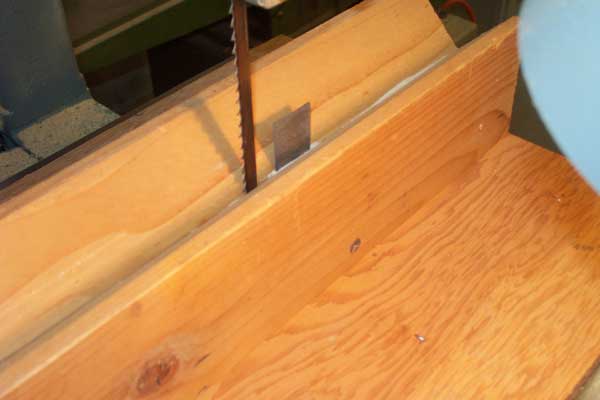Halving Dowels
Techniques and jigs for sawing round dowels in half lengthwise. July 9, 2009
Question
Does anyone have any suggestions on how to rip some 1/2" dowels in half? Thin kerf blade on the table saw is as far as I've made it. I don't have a bandsaw.
Forum Responses
(Cabinetmaking Forum)
From contributor Z:
Have you thought about just going to the lumberyard and buying 1/2" half round?
From the original questioner:
I should have mentioned that they're cherry.
From contributor V:
If you are a do-it- yourself guy like I am then I have a few suggestions. The easiest way is to use a 1/2" diameter bullnose router or shaper cutter. Simply bullnose a 1/2" thick piece of cherry and then rip the "half dowel" free on the table saw. Alternately you can run one pass on each face of the board with a 1/4" radius roundover bit to get the full half circle and then rip the half dowel free.
I assume you already bought 1/2" cherry dowels so try this: take two pieces of scrap douglas fir 1-1/2" x 1-1/2" x 3 or four inches long and bore a 1" deep hole in the end grain that fits your dowel stock. Place the center of the holes 1/2" from two adjacent edges. Now glue one on each end of each dowel and register the blocks on a flat surface so they are coplanar. After the glues dries, rip the blocks "just flush" with the quadrents of the dowels at those two adjacent edges that were 1/2" on center from the blocks edge.
The blocks can now guide and keep the dowels from rotating as you rip them in half against the table saw fence. You will need an auxiliary saw fence that is at least twice as long as your dowel and block assemblies. Some sort of 1/2" diameter concave hold in block just in front of the saw blade would help but need to be removed to saw the last few inches.
From contributor B:
If you just have a few to do, what about simply taping the dowel to the edge of a board (with several strips of masking tape), then running the whole thing through your thin-kerf blade? I think the tape will hold the dowel in place and keep it from twisting.
From contributor D:
Drill a hole a hair larger than the dowel diameter in a block of wood. Place the block on the bandsaw so the blade bisects the bore and cut in a bit. Clamp it in place. Push the dowels through. This is fast and accurate.
From contributor J:
I wouldn't advise anyone to rip a dowel on a table saw. Please tell me you haven't tried it and it was just an idea? Bandsaw is the way to go if you already have the dowel, or bullnose with shaper and rip as others have suggested.
From contributor V:
As long as the dowel is prevented from rolling I see no danger. The bandsaw method has no means to prevent the dowel from spinning except the blade itself but we have no idea how long these cherry dowels are.
From contributor R:
I made this long ago to split dowels and it has worked fine with no twisting. It would work better with some sort of hold downs on the in feed side, maybe a couple of small finger boards.

Click here for higher quality, full size image
From contributor B:
That looks like an excellent jig. I've thought of that, and done versions of it over the years, but I never thought of the splitter, which would make all the difference.
From contributor N:
They can be cut on a table saw with a jig. I'll try to explain the jig and hope it is understood. Take two pieces of 3/4 ply, cut to 1 1/2" X 4'. On each piece, cut a channel the width of the dowel and cut it at 1/2 the depth. Put the two pieces together so you have a square hole the size of the dowel (a 5/8" square hole for a 5/8" dowel) the entire length of the ply and screw these two pieces together on the top only. No screws on the bottom since this will be the area going through the blade. The dowel should not fit loosely in this dado or it will twist while cutting. Put a piece of ply in the back to close up the rear of the tube. Set the saw fence to 3/4" and the depth to whatever height needed to cut the dowel. Make a separate one for every dowel size you use.
